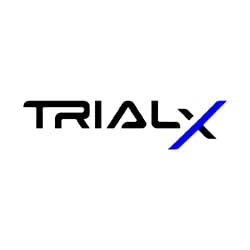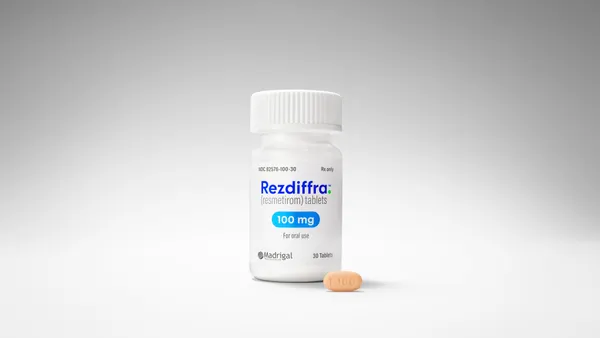PUBLISHER Lisa Banket EDITOR Taren Grom CREATIVE DIRECTOR Marah Walsh DIRECTOR OF SALES Darlene Kwiatkowski MANAGING EDITOR Denise Myshko CONTRIBUTING EDITORS Elisabeth Pena Kim Ribbink Alex Robinson Lynda Sears Copyright 2003 by PharmaLinx LLC, Titusville, NJ Printed in the U.S.A. Volume Three, Number Two PharmaVOICE is published 12 times per year by PharmaLinx LLC, P.O.Box 327, Titusville, NJ 08560. Postmaster: Send address changes to PharmaVOICE , P.O. Box 327, Titusville, NJ 08560. PharmaVOICECoverage and Distribution: Domestic subscriptions are available at $160 for one year (12 issues). Foreign subscriptions: 12 issues US$330. Contact PharmaVOICE at P.O. Box 327, Titusville, NJ 08560. Call us at 609.730.0196 or FAX your order to 609.730.0197. Contributions: PharmaVOICE is not responsible for unsolicited contributions of any type. Unless otherwise agreed in writing, PharmaVOICE retains all rights on material published in PharmaVOICE for a period of six months after publication and reprint rights after that period expires. Email: [email protected]. Change of address:Please allow six weeks for a change of address. Send your new address along with your sub scription label to PharmaVOICE, P.O. Box 327, Titusville, NJ 08560. Call us at 609.730.0196 or FAX your change to 609.730.0197. Email: [email protected]. IMPORTANT NOTICE: The post office will not forward copies of this magazine. PharmaVOICE is not respon sible for replacing undelivered copies due to lack of or late notification of address change. Advertising in PharmaVOICE: To advertise in Pharma VOICEplease contact our Advertising Department at P.O.Box 327, Titusville, NJ 08560, or telephone us at 609.730.0196. Email: [email protected]. www.pharmavoice.com THE FORUM FOR THE INDUSTRY EXECUTIVE Volume 3 . Number 2 Send your letters to feedback@pharma voice.com. Please include your name, title, company, and business phone number. Let ters chosen for publication may be edited for length and clarity. All submissions become the property of PharmaLinx LLC. Letters ith drugs c osting an average of $800 million and tak ing 10 years to 15 y ears to develop, pharma ceutical and biot ech no l ogy ex ecu t i ves have no choice but to improve R&D productivit y and get new pro ducts to the market more quick ly. To do so, the clinicaltrial process needs to be streamlined for improved efficiency. Hampering efforts, however, is the funda mental nature of research and development. “Unpredictability is the one feature that is guaranteed to challenge — and derail — project performance in a clinicaldevelop ment program,” says Lawrence A. Meinert, M.D., MPH, senior VP of global clinical operations for Covance Inc. “Years of efforts have been expended to enhance clinical management throughout the drugdevelop ment industry. It is nearly universally understood that clinical trials consistently underperform within the areas of enroll ment rates and staffing. The goal is clear, however: meet the numbers established in the protocol that can be easily tracked and measured by the standard arsenal of project management tools. And yet again and again, project management fails to deliver ontime, ontarget completion of these sim pletoarticulate, but difficulttodeliver, success critical goals.” Much of the responsibility of delivering on the critical goals of a project falls on the shoulders of project managers or team lead ers. These professionals often are required to perform Herculean tasks — coordinate physician investigators, manage patient recruitment efforts, adapt to new technolo gies, communicate with diverse teams across a project, gather and assimilate vast amounts of data, among other functions. Project managers, according to industry experts, are the nuts and bolts that hold the project together. They must be strong lead ers, able to motivate a team, keep projects on schedule, and deliver quality. “Project managers need to be well rounded, they need to have adequate knowl edge of the drugdevelopment process, and of the processes associated with individual clinical trials,” says Karen Wolf, VP of strategic account management at AAI International. “They need to have enough knowledge to manage a multidisciplinary team of people. They don’t have to be experts in any one discipline, but they do have to have enough knowledge to manage the team credibly.” For project managers to meet all the requirements necessary for successful pro ject outcomes, industry leaders maintain that the process must change. Dr. Meinert suggests that lessons can be learned from other industries that have explored how to best achieve the necessary changes. “Look at NASA for example,” he says. “For years NASA operated its robotic mis sions under the same model as the drug development industry: faster, better, cheap er. But such an approach leads to a profound risk of catastrophic failure, as we saw in the Mars Polar mission disasters. As a result, NASA developed an approach called `con tinuous risk management.”’ Dr. Meinert says this methodology can be applied to scientific management. “Drug development is indeed like rock et science,” he says. “It is complex, unpre dictable, and requires relentless proactivity to ensure mission success.” Taren Grom Editor Lessons can be learned from other industries that have explored how to best achieve change,NASA for example. Drug development is indeed like rocket science. It is complex,unpredictable,and requires relentless proactivity to ensure mission success. 3 PharmaVOICE F e b ru a r y 20 03 W
An article from


Letter from the Editor
Filed Under:
Research & Development









